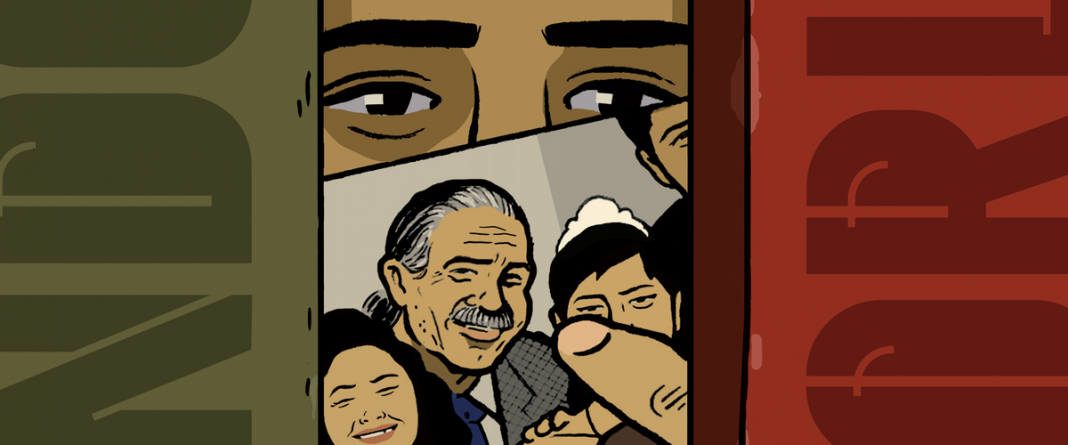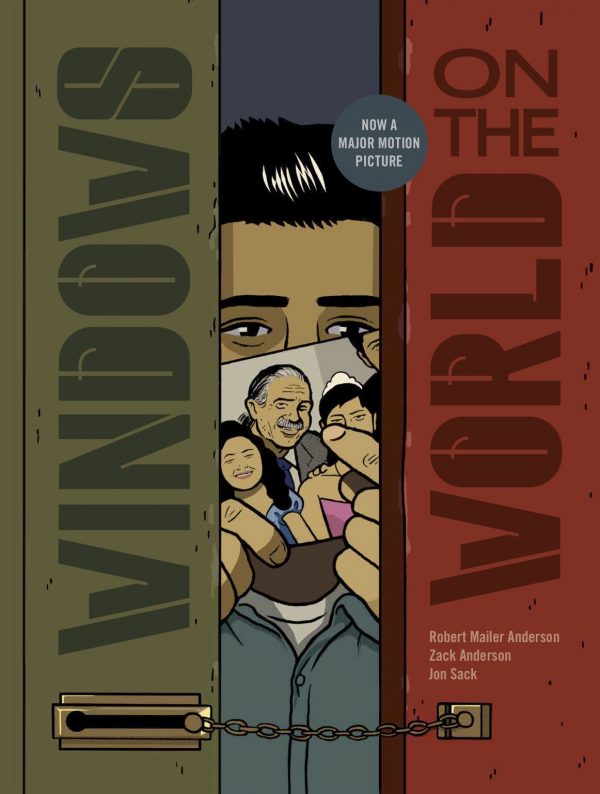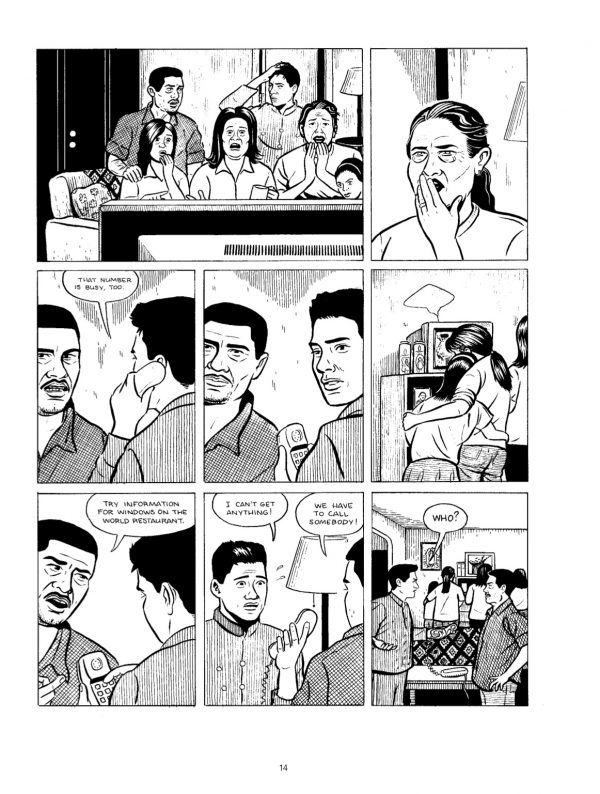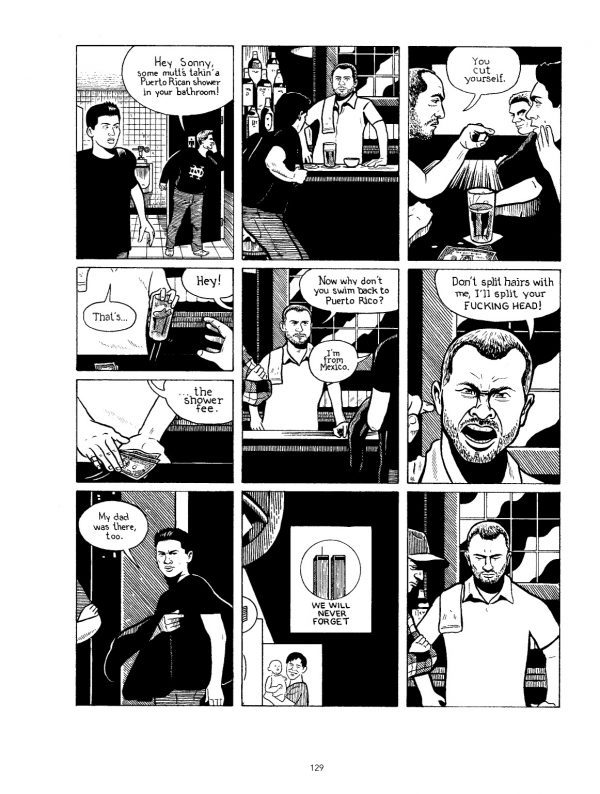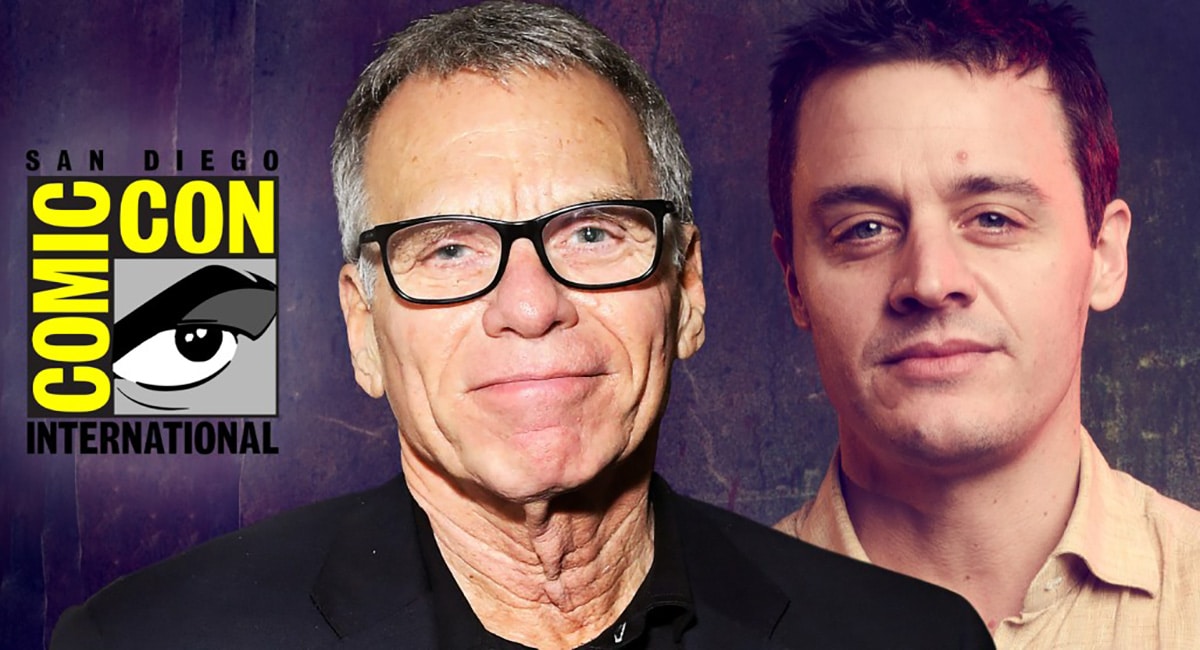Windows on the World
Written by Robert Mailer Anderson and Zack Anderson
Illustrated by Jon Sack
Fantagraphics
In many ways there’s never been a beginning and America has always been a place where the other is demoralized and discarded socially and economically while being charged with keeping the nation running through backbreaking work, demeaning work. At the same time, 9-11 seems like the beginning of the current iteration of American repression of the other. You know what I mean when I say “the other.” It’s those who are perceived as not “us.”
As Ta-Nehisi Coates once said, and I heard him say it with my own ears, so it was something like this anyhow, whitneness is a sliding scale and you never know when you’re going to be on the wrong end of it. Italians used to be on the wrong end of it, for instance. Asian Americans have been in several capacities. Jews often are. African Americans almost always. Native Americans definitely.
But 9-11 institutionalized the idea that Muslims were not “us” and inhabited the wrong end of that sliding scale in a way that it had not been prior. In response, our government created an entire system of oppressive policies and worked to further our security state. It’s really a direct line from 9-11 to where we are now, with our current president still reigniting the rage against Muslims, but, also importantly, seizing a rage that was so huge that it had to find other places to settle, and the place it found was Mexico, which was such a threat it merited the silliest extension of our modern security state, a wall between it and us.
That’s hard to not consider as you read Windows on the World, an affecting road drama written with a mix of delicacy and grit by Robert Mailer Anderson and Zack Anderson which takes us back to the days following 9-11 that were ruled by uncertainty for pretty much everyone. What’s examined here, though, is the idea that the uncertainty for families of immigrants, particularly undocumented ones, was elevated in a way that many white Americans can’t conceive. Uncertainty already ruled their lives in regard to the loved one who went to America to make money, and the 9-11 was the kind of event that could reveal how truly tenuous that arrangement is.
The book is named after the restaurant in the Twin Towers because that’s where Fernando’s father works. He and his family live in Mexico and since the collapse of the towers, they haven’t received any money nor had any contact with him, and the family is quickly trying to figure out how to survive even as their mother begins to emotionally break from the immediate loss and also the endless strain.
One night she swears she saw her husband on television running down a New York City street as the towers collapsed and that sets into motion a mission for Fernando to step up and find his father. But Fernando finds that it’s not so simple to track down an undocumented Mexican worker in New York City, and also that the American system is one that puts such people in their administrative place — that is, nowhere. In a system where you don’t exist, there’s no clerical way to have a file of your demise. Against this backdrop, Fernando must rely on the kindness of strangers to keep him afloat.
Oddly, Windows on the World began life as a screenplay that did actually become a finished film that came out in 2019. It showed at festivals but never found a distributor. Whatever the process was that resulted in the transformation to graphic novel, we should be thankful for it. It’s not just an adaptation of a movie in comics form but something that is a living, breathing creature on its own.
A lot of that is due to Jon Sack‘s incredible art, which is particularly suited to bringing this world alive, capturing the good-natured human interaction quite well, but always establishing it as taking place in a cluttered world, particularly with his New York City scenes. He portrays it as an imposing city, which it is. It’s a place where newcomers walk among towering monoliths that make them feel insignificant, careening through crowds of strangers that make them feel lost, and within proximity of discarded humans and objects that make them feel scared for their own possibilities in this landscape.
What his journey reveals is a country in chaos and the implication is that while 9-11 escalated that aspect, it was really already there. But more than that his journey reveals the human toll of that chaos and eventually gets to the core of it so directly that the rage and frustration it creates erupts out and reveals how being demeaned, being broken, being othered all result in a form of desperate self-preservation that can manifest in personal behavior, which creates shame and in turn leads to self-destruction.
Now we live in a country that has gripped onto that process and worked to make it more decisive, much to our own shame, and a book like Windows on the World offers commentary that is depressing in its prescience but hopeful in its wider outlook.


